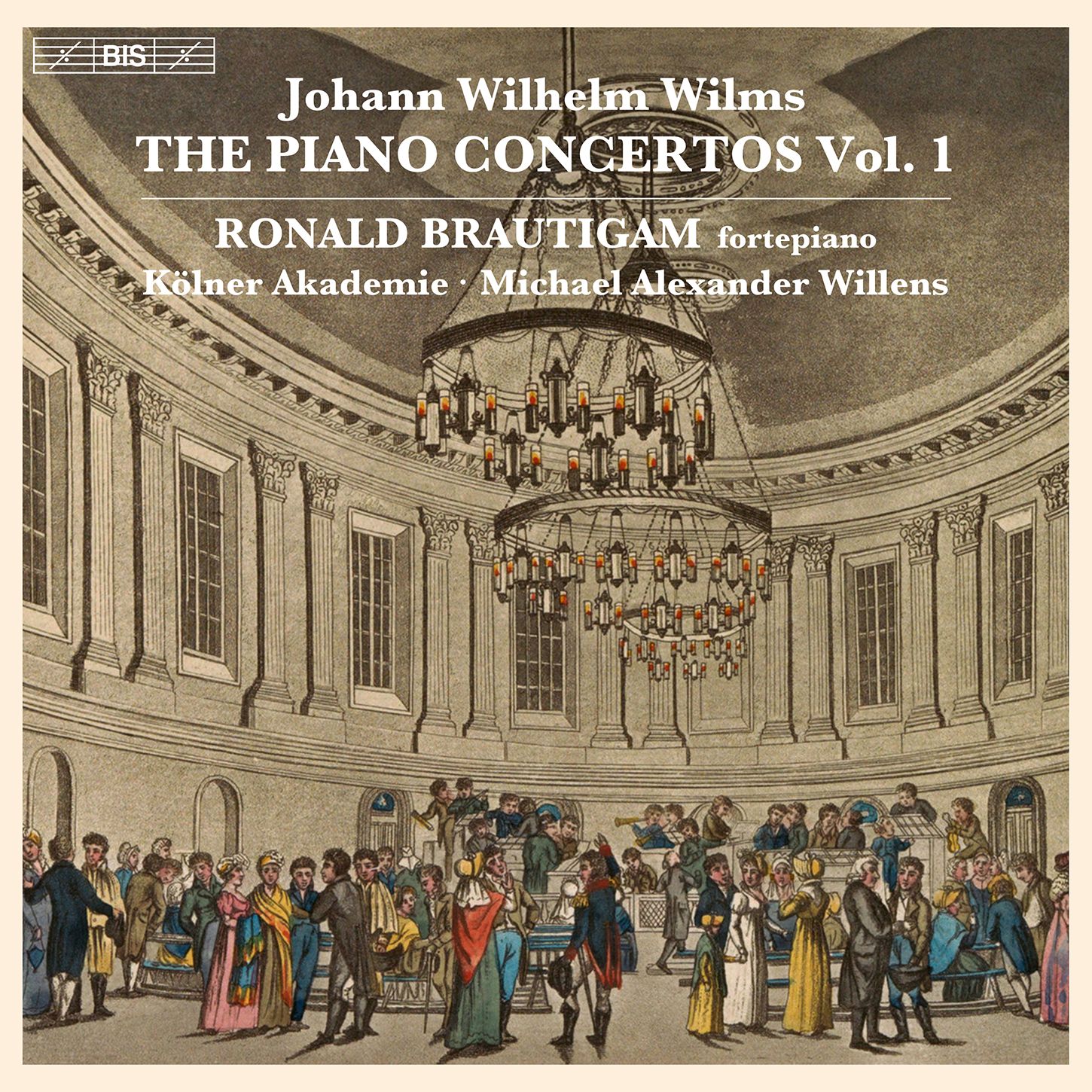A discovery: the Keyboard Concertos of Johann Wilhelm Wilms
Heartily recommended: there is such variety here, and the music is guaranteed to delight

Fresh and eloquent, these concertos by Johann Wilhelm Wilms (1772-1847) are the very epitome of what this site is all about: the disvoery of music that will, beyond doubt, enhance your life.
Cologne-born Wilms lived in Amsterdam from the age of 19. A near-contemporary of Beethoven, his music was at one point performed significantly more often than his great colleagues. Wilms' output insldes symphonies, solo sonatas, wind conceros (and a cello concerto) ad a sequence of piano concertos. We have five (and know of seven); three are presented here. Unfortunately, Amsterdam might not have suited him too well; he found Dutch tastes too unsophisticated and when he died was remembered primarily as the composer of the Dutch national anthem!
The first movement of the Op. 3 Concerto (probably composed in 1796 for piano or harpsichord and orchestra) is bright and breezy, and graceful, launched by a "Mannheim Rocket" (an upwardly-ascending phrase - think the opening of Mozart's G-Minor Symphony, No. 40):
After the bracing first movement of Op. 3, the immediate depth of the E-Minor Adagio comes as something of a surprise; and how beautifully both the Kölner Akademie and then Brautigam, mould the first theme:
Brautigam, playing on a fine fortepiano, positively exults in the finale, which could for all the world furnish a finale to a Haydn keyboard concerto:
The C-Major Concerto, Op 12 (published 1807) is decidedly symphonic in nature, and indeed the solo instrument's muscular opening acts as muscly riposte to the extended prchestral exposition. One immediately wonders about Wilms' symphonic output (I'm sure we'll find out ina future post ...). In some ways there are parallels with the expansiveness of Mozart's own C-Major Concerto, No. 25, but Wilms' way is his own. The writing is intricate rather than virtuoso, and Brautigam is masterly at offering true detail; plus, there is an artful crafting of the musical texture from Wilms that is most appealing:
The slow movement is a dream, cast in the mediant (E-Major). The keyboard part exudes the spriti fo improvisation, while sudden minor-mode orchestral outbursts bring significant drama. There is another parallel to Mozart here, in that at times the keyboard line could be a vocal line from an opera aria (something that charactises Mozart's slow movements) a pair of horns towards the movement end enter into dialogue with Brautigam in the most civilised fashion before the surprisingly tranquil opening to the finale steals in. Here there are number of prominent obow solos (the oboist at the premiere was played by the dedicatee's father, which migt go some way to explaining this!). There are some positively delicious left-right hand imitations from Brautigam, too:
The third and final concerto in the D-Major, Op. 26, published in 1810. It acts as more of a virtuoso vehicle; interesting how thsi disc nestles the slightly less virtuoso C-Major between two soloist-centric works. The first movement is shot through with a tensile strength. Brautigam's sense of phrase direction is wonderful - under his fingers, the music makes so much sense:
The finale is a “Rondo alla pollacca,” a tribute to the polonaise beautifully and brilliantly done. Brautigam is magnificent here, so even, and so understanding of Wilms' fascinating harmonic twists and turns:
The year 2022 brings the 250th anniversary of Wilms’ birth. For this, Brautigam edited the five extant piano concertos by the so-called ‘Dutch Beethoven‘ (the three here are announced as with the assistance of Michael Alexander Willems); a second volume will follow to complete the set.
Heartily recommended: there is such variety here, and the music is guaranteed to delight.
Wilms Brautigam (BIS) Amazon